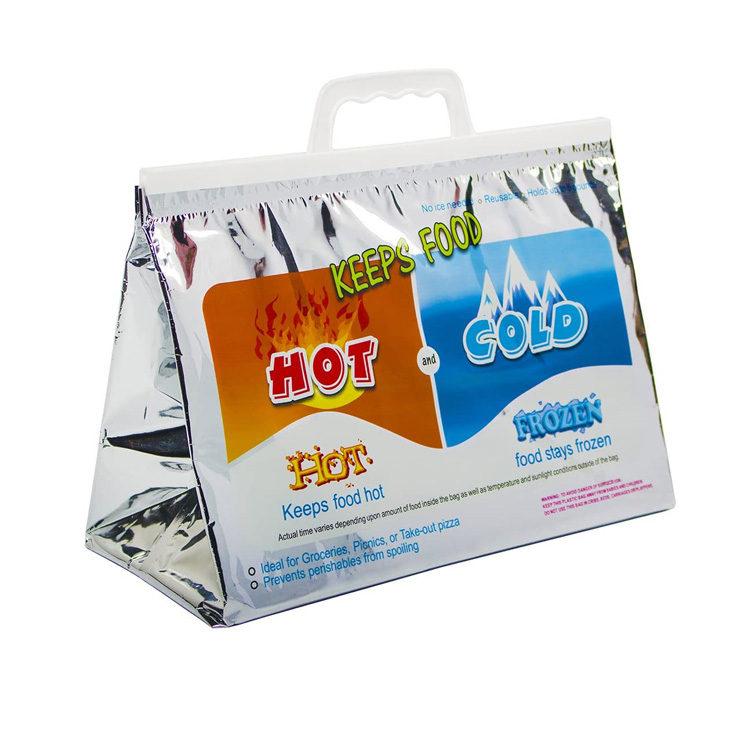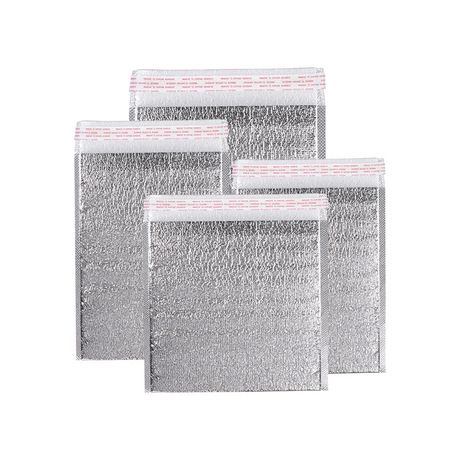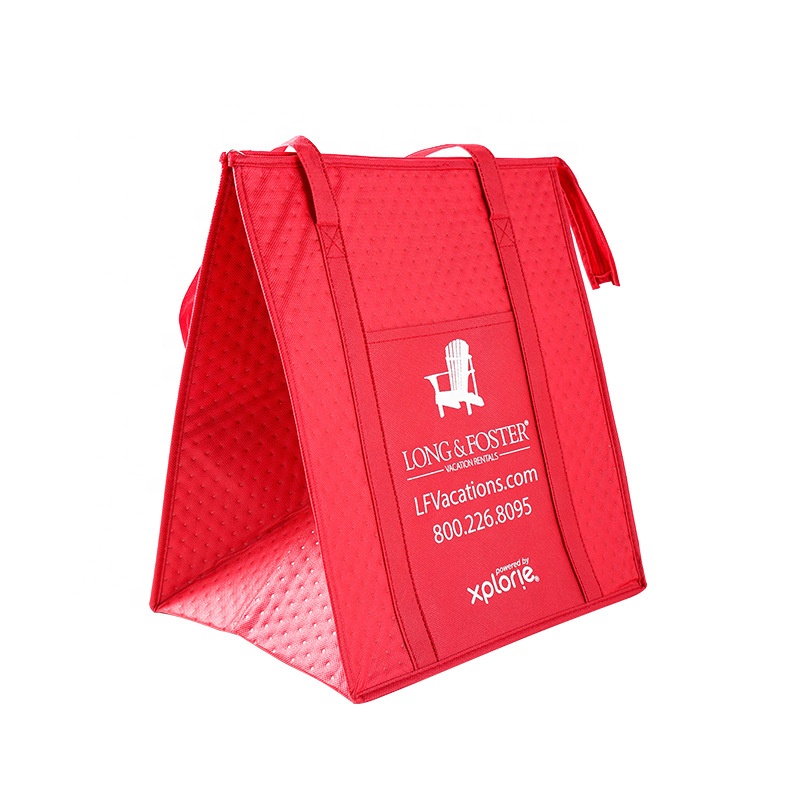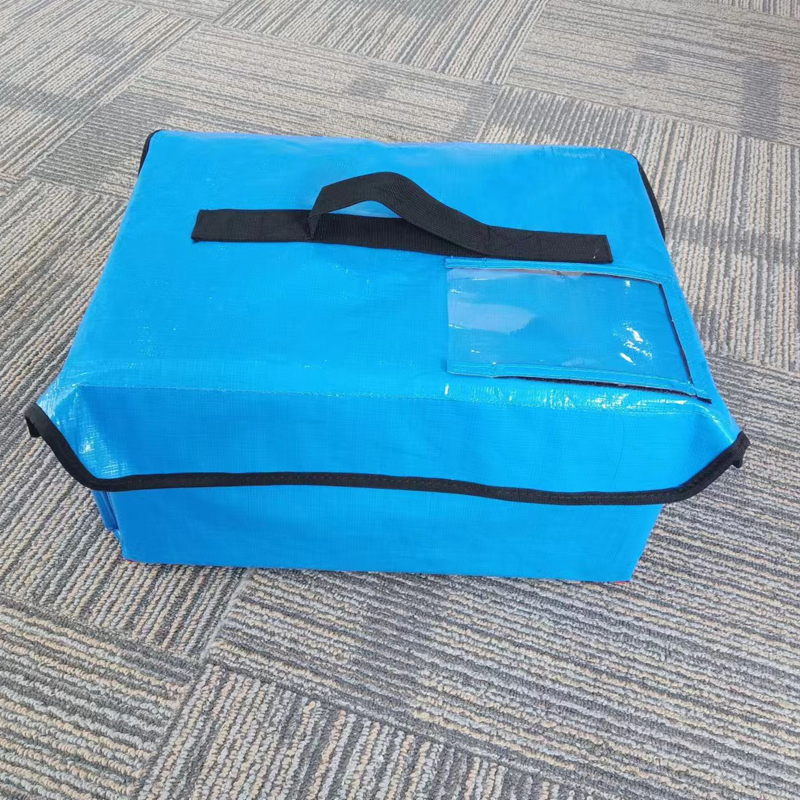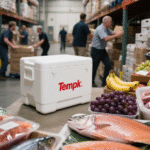Can Cooler Ice Packs Replace Dry Ice for Temperature‑Sensitive Shipments?
Cooler ice packs are often seen as a more convenient, cost-effective option for temperature-sensitive shipments, but can they truly replace dry ice in maintaining cold temperatures? In diesem Leitfaden, we will compare cooler ice packs to dry ice, highlighting when each is ideal, and how to optimize their use in cold chain logistics.
-
How cooler ice packs work compared to dry ice
-
Advantages and disadvantages of using cooler ice packs over dry ice
-
Best scenarios for using cooler ice packs in shipping
-
Cost and environmental considerations
-
Key factors to consider when switching from dry ice to ice packs
How Do Cooler Ice Packs Work in Cold Chain Shipping?
Cooler ice packs use a phase-change material (PCM) to keep temperatures stable, typically between 0–8°C. Unlike dry ice, which maintains sub-zero temperatures (–78.5°C), ice packs are designed for refrigerated shipments, making them ideal for pharmaceuticals, frisches Essen, and other temperature-sensitive products that don’t need freezing.
Cooler ice packs can be easier to handle and store than dry ice and often don’t require special ventilation, which makes them more suitable for shorter transit times or situations where dry ice would be too extreme.
Cooler Ice Pack vs Dry Ice: Temperature Range Comparison
| Cooling Method | Temperature Range | Ideal Use | Shipment Duration |
|---|---|---|---|
| Kühlere Eisbeutel | 0–8°C | Pharmazeutika, Essen, medical supplies | Up to 48 Std. |
| Dry Ice | –78.5°C | Frozen food, Impfungen, Biologika | 24–72 hours |
Practical Tips
-
For refrigerated goods: Cooler ice packs are ideal for maintaining moderate temperatures without freezing.
-
For long shipments: Dry ice is necessary for extended trips or when sub-zero temperatures are needed.
-
For multi-temperature shipments: Use both ice packs and dry ice in layers for different temperature zones.
Real‑Life Example: A pharmaceutical company successfully switched to cooler ice packs for 48-hour shipments of vaccines, maintaining 2–8°C, and found it to be a cost-effective solution with no product degradation.
When Should You Use Cooler Ice Packs Over Dry Ice?
Cooler ice packs are the ideal solution for items that need to be kept cool (but not frozen), wie zum Beispiel frische Lebensmittel, certain medications, and biotechnology products. They are easier to manage than dry ice and often cheaper, making them a good choice for shipments with less stringent temperature requirements.
If you need to maintain temperatures between 2°C and 8°C for up to 48 Std., cooler ice packs are your best option.
Best Uses for Cooler Ice Packs
-
Pharmazeutika: Keep medications like insulin at the required temperature.
-
Essen: Ideal for fresh produce, Molkerei, or meats that need to stay cool but not frozen.
-
Short‑term Shipping: Use ice packs for shipments that don’t require long durations or extreme cold.
Cooler Ice Pack Applications vs Dry Ice for Different Needs
| Shipment Type | Cooler Ice Packs Effectiveness | Dry Ice Effectiveness | Best Use |
|---|---|---|---|
| Insulin | Effective for 48 Std. | Ineffective | Cooler ice packs for short trips, dry ice for long‑term storage |
| Frozen Foods | Ineffective | Wirksam | Dry ice for extended trips |
| Biologika | Effective for moderate temps | Wirksam | Cooler ice packs for short transit, dry ice for critical shipments |
When Should You Use Dry Ice Instead of Cooler Ice Packs?
Dry ice is essential for items that need to remain frozen at temperatures as low as –78.5°C. This is necessary for shipping frozen food, Impfungen, und biologische Proben. If your product needs to stay below freezing for more than a day, dry ice is far more effective than cooler ice packs, which cannot maintain such low temperatures for extended periods.
Dry ice also sublimates (changes from solid to gas), so it can be more challenging to handle, requiring special ventilation to avoid dangerous gas build‑up.
Best Uses for Dry Ice
-
Frozen Goods: Dry ice is perfect for shipping items like ice cream, frozen seafood, and meats that need to remain frozen.
-
Vaccines and Biologics: Certain medications, like vaccines, require subzero temperatures for preservation.
-
Extended Shipping: Dry ice is necessary for longer trips, ensuring that products remain below freezing for the duration of transport.
When to Use Dry Ice for Long Shipments
| Shipping Duration | Cooler Ice Packs Effectiveness | Dry Ice Effectiveness | Best Use |
|---|---|---|---|
| 1–2 days | Wirksam | Wirksam | Cooler ice packs for refrigerated, dry ice for frozen items |
| 3–5 days | Ineffective | Wirksam | Dry ice to ensure extended freezing |
| 5+ Tage | Ineffective | Wirksam | Dry ice for constant freezing temperature |
User‑Focused Tips
-
For frozen food shipping: Use dry ice for extended transit; cooler ice packs are fine for short deliveries.
-
For medical shipments: Dry ice is required for vaccines that need to stay frozen for long periods.
-
For mixed temperature shipments: Combine both—use dry ice for frozen goods and cooler ice packs for refrigerated items.
Cost and Environmental Considerations: Cooler Ice Packs vs Dry Ice
While cooler ice packs are typically more cost-effective and easier to handle, they are limited by their temperature range. Dry ice is often more expensive and requires special handling, but it is necessary for maintaining extremely low temperatures. From an environmental standpoint, dry ice sublimates into carbon dioxide, which can contribute to greenhouse gases if not used responsibly. Cooler ice packs, auf der anderen Seite, are typically more eco-friendly since they don’t release harmful gases.
Cost Comparison of Cooler Ice Packs and Dry Ice
| Method | Average Cost per Shipment | Umweltauswirkungen | Best Use |
|---|---|---|---|
| Kühlere Eisbeutel | $10–$30 | Niedrig (ungiftig) | Short shipments, Arzneimittel |
| Dry Ice | $25–$50 | Hoch (CO₂ emissions) | Long shipments, gefrorenes Essen |
2025 Trends in Cold Chain Packaging: Innovations and Regulations
As the cold chain industry advances, 2025 innovations focus on improving insulation, extending cooling duration, and enhancing sustainability. Regulations around dry ice use are becoming stricter, and companies are increasingly opting for eco-friendly solutions like biodegradable cooler ice packs. Smart packaging solutions with temperature monitoring are also on the rise, ensuring that products remain within the required temperature ranges during transport.
Latest Trends
-
Eco-friendly packaging: Biodegradable materials are now being used in cooler ice packs and shipping containers.
-
Temperature tracking: Real-time temperature monitoring devices ensure shipments remain within the correct range.
-
Improved insulation: New technologies reduce sublimation rates in dry ice and increase the efficiency of cooler ice packs.
Market insight: The demand for sustainable cold chain packaging solutions has increased by 10% annually due to rising consumer concerns over environmental impact.
Häufig gestellte Fragen {#faq}
Q: Can I use cooler ice packs and dry ice together in the same shipment?
Yes—use cooler ice packs for refrigerated items and dry ice for frozen goods in the same box.
Q: How long do cooler ice packs last?
Cooler ice packs typically last up to 48 Std., depending on the insulation and ambient temperature.
Q: Is dry ice safe for food shipping?
Ja, dry ice is commonly used for shipping frozen foods, but it requires proper ventilation and handling.
Q: How should I dispose of dry ice safely?
Let dry ice sublimate in an open, well-ventilated outdoor area away from children or pets.
Zusammenfassung & Takeaways
Cooler ice packs and dry ice each have unique advantages for temperature-sensitive shipments. Use cooler ice packs for short shipments of refrigerated goods and dry ice for longer shipments requiring freezing temperatures. Consider cost, Umweltauswirkungen, and duration when choosing between the two.
What to Do Next
-
Use our calculator to determine your ideal cooling solution.
-
Explore our cold chain products for the best packaging and cooling solutions.
-
Share this guide with your logistics team to streamline your shipping process.
About Tempk
Tempk specializes in advanced temperature-controlled packaging, ensuring the safe delivery of sensitive products. Mit over 30 years in the cold chain industry, we provide durable, reliable solutions for pharmaceuticals, Essen, und andere temperaturempfindliche Waren.
Need expert guidance? Contact our team for tailored advice today.










